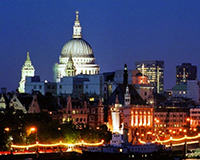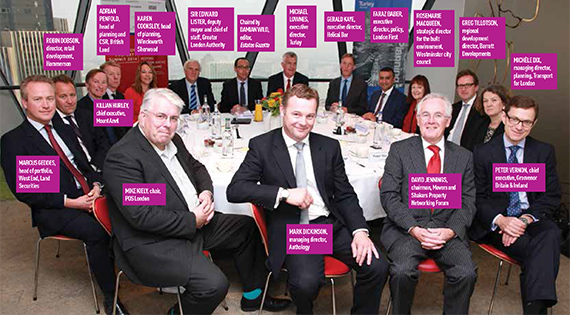At some point around Christmas, the 8.6 millionth resident of London will be born. It will mean the city has finally passed its 1930s peak. Acres of newsprint will be devoted to the question: will the growth continue and can the city cope?
At a breakfast debate at the Gherkin last month, an expert group gathered to debate these and other issues.
London, according to deputy mayor Sir Edward Lister, is growing by 100,000 people a year, causing housing and workplace challenges. “It used to always be that couples at some point had children then left,” says Lister. “That isn’t happening.”
Those numbers – and London’s attractiveness to the rest of the world – are creating pressure points. And nowhere more so than in housing.
“We need to be building circa 50,000 homes a year and so have to basically double housing production,” says Lister. “This year could be the best year ever. We may be close to the 40,000 mark. We don’t think PRS is the answer, partly because people don’t want it, although it will help. They want to buy their own homes.
“On the other side of the coin is the office and business park workspace issue. We have been eating industrial land fairly consistently year-on-year. We are now beginning to worry about our rate of take from industrial. Meanwhile, the vacancy level is next to nothing in central London. There is a desperate need for more offices.”
For the deputy mayor, transport is a significant piece of the jigsaw, connecting homes and offices in parts of London that were previously neglected – Croydon, Stratford and Old Oak Common. And here delivery is inextricably linked to finance. Without further tax-raising powers – yes, devolution – London simply cannot afford to deliver the infrastructure and housing the city needs to accommodate its growth.
“We have borrowed £3.5bn for Crossrail,” says Lister. “We have borrowed another £1bn for the Northern Line extension. We’ve got the leftovers from the Olympic Park still on our books, which adds up to three or four hundred million. We are at our borrowing limits.”
And then there’s the public realm. Rosemarie MacQueen, outgoing strategic director for the built environment at Westminster council, says: “If you want people to invest and come here, you want a city that’s not shabby. With more budget cuts come less cleaning, fewer pavements being mended, and so on, so the public realm is not going to operate in the way you want. So you are going to look at new models, like business improvement districts.”
And it is not just local authorities that will have to find new ways of funding improvements. “If you look at the growth across London, the amount that we need to spend on transport infrastructure, you are talking about billions more than we’ve got at present,” says Michèle Dix, managing director for planning at Transport for London. “It’s so large that unless the mechanism for funding changes in a radical way, we are not going to be able to keep up with it.”
With government showing, in Manchester’s case this week, a commitment to devolve power, some of these pressures may be eased.
Killian Hurley, chief executive of Mount Anvil, is clear about what is at stake. “That all ties back to the ambition we have for London,” he says. “I was out with a colleague of Sir Eddie’s who came across a 1992 pamphlet that asked the question: ‘Will London ever be a great city again?’ And here we are on the cusp of being one of the truly world-class cities. I wonder, do we sell that well enough?”
It begs further questions. Does the city have the capacity to retain its status and do government and others have the courage to do all that is necessary in support?
These issues will be at the heart of the London Property Summit, which takes place on 17 November. For more details, click here.












